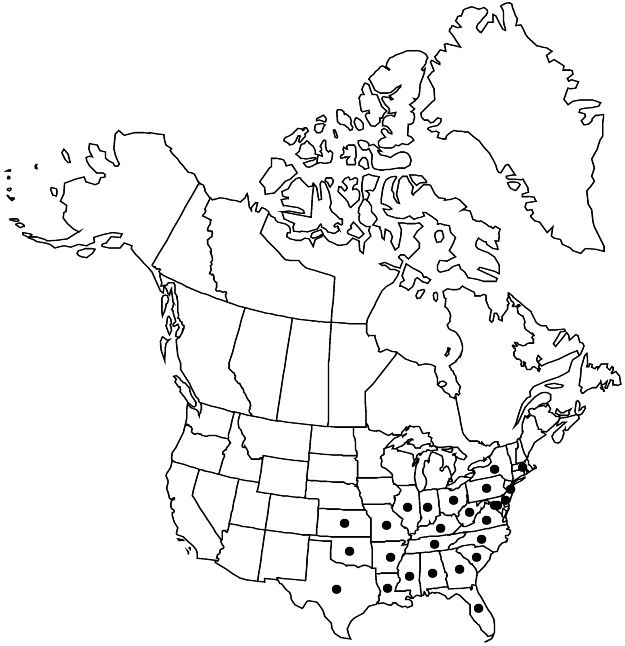Difference between revisions of "Hypericum hypericoides"
Inst. Rei Herb. 2: 520. 1766.
FNA>Volume Importer |
FNA>Volume Importer |
||
| Line 11: | Line 11: | ||
|name=Ascyrum hypericoides | |name=Ascyrum hypericoides | ||
|authority=Linnaeus | |authority=Linnaeus | ||
| + | |rank=species | ||
|publication_title=Sp. Pl. | |publication_title=Sp. Pl. | ||
|publication_place=2: 788. 1753 | |publication_place=2: 788. 1753 | ||
| Line 28: | Line 29: | ||
|discussion=<p>Subspecies 3 (2 in the flora).</p><!-- | |discussion=<p>Subspecies 3 (2 in the flora).</p><!-- | ||
--><p><i>Hypericum hypericoides</i> can be distinguished from <i>H. crux-andreae</i> by the two-merous ovary, narrower leaves, smaller flowers, and more richly-branched stems. It is variable in leaf and sepal shape and size; three subspecies can be recognized.</p><!-- | --><p><i>Hypericum hypericoides</i> can be distinguished from <i>H. crux-andreae</i> by the two-merous ovary, narrower leaves, smaller flowers, and more richly-branched stems. It is variable in leaf and sepal shape and size; three subspecies can be recognized.</p><!-- | ||
| − | --><p>The erect bushy form (< | + | --><p>The erect bushy form (<i></i>subsp.<i> hypericoides</i>) is most widespread and has given rise to a northern diffuse form (<i></i>subsp.<i> multicaule</i>) in the United States and a prostrate form (subsp. prostratum N. Robson) in Hispaniola.</p> |
|tables= | |tables= | ||
|references= | |references= | ||
| Line 51: | Line 52: | ||
-->{{#Taxon: | -->{{#Taxon: | ||
name=Hypericum hypericoides | name=Hypericum hypericoides | ||
| − | |||
|authority=(Linnaeus) Crantz | |authority=(Linnaeus) Crantz | ||
|rank=species | |rank=species | ||
| Line 63: | Line 63: | ||
|publication year=1766 | |publication year=1766 | ||
|special status= | |special status= | ||
| − | |source xml=https://jpend@bitbucket.org/aafc-mbb/fna-data-curation.git/src/ | + | |source xml=https://jpend@bitbucket.org/aafc-mbb/fna-data-curation.git/src/f50eec43f223ca0e34566be0b046453a0960e173/coarse_grained_fna_xml/V6/V6_144.xml |
|genus=Hypericum | |genus=Hypericum | ||
|section=Hypericum sect. Myriandra | |section=Hypericum sect. Myriandra | ||
Revision as of 23:02, 16 December 2019
Subshrubs or shrubs, erect or decumbent to prostrate, unbranched or branched, sometimes diffuse and mat-forming, 0.5–3 or 3–15 dm. Stems: internodes 2-winged. Leaf blades oblanceolate or narrowly oblong or elliptic to linear, 7–25 × 1–8.5 mm, base not articulated, usually cuneate, sometimes rounded, with glandlike auricles, margins subrecurved, apex rounded to obtuse, midrib with 1–2 pairs of branches. Inflorescences narrowly cylindric to pyramidal, 1–12-flowered from 1–4 nodes, sometimes with branches from to 10 proximal nodes, or branching more elaborate and pseudodichotomous; pedicels erect in fruit, bracteoles distal. Flowers 10–20 mm diam.; sepals persistent, enclosing capsule, 4, unequal, outer ovate-suborbiculate to narrowly elliptic, 5–12.5 × 2–13 mm, apex subapiculate to obtuse, inner lanceolate, 1–4 × 2 mm, apex acute; petals 4, bright to pale yellow, obovate to narrowly oblong-elliptic, 6–12 mm; stamens persistent, 40–50; ovary 2-merous. Capsules narrowly compressed-ovoid to cylindric-ellipsoid, 5–9 × 2–4 mm. Seeds not carinate, 0.6–0.8 mm; testa finely linear-reticulate to linear-foveolate.
Distribution

c, e United States, Mexico, West Indies (Bahamas, Greater Antilles), Bermuda, Central America (Guatemala, Honduras).
Discussion
Subspecies 3 (2 in the flora).
Hypericum hypericoides can be distinguished from H. crux-andreae by the two-merous ovary, narrower leaves, smaller flowers, and more richly-branched stems. It is variable in leaf and sepal shape and size; three subspecies can be recognized.
The erect bushy form (subsp. hypericoides) is most widespread and has given rise to a northern diffuse form (subsp. multicaule) in the United States and a prostrate form (subsp. prostratum N. Robson) in Hispaniola.
Selected References
None.
Key
| 1 | Plants erect, usually unbranched from base and freely branched well above ground level; leaf blades usually narrowly elliptic to narrowly oblong, broadest near middle. | Hypericum hypericoides subsp. hypericoides |
| 1 | Plants decumbent to prostrate, branching from base; leaf blades usually oblanceolate, broadest beyond middle. | Hypericum hypericoides subsp. multicaule |